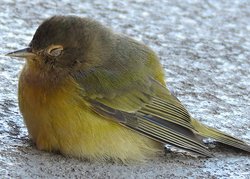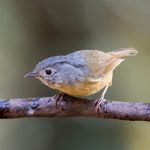
Or perhaps I should say “illusive.” That’s because an American architecture firm is planning what’s billed as the “world’s first invisible building” in South Korea. (Hat tip to Pat O’Donnell for the story; the image above is by GDS Architects, via CNN.) The skyscraper would apparently be cloaked in LED panels projecting an image of what’s on the other side of the building, for a pretty nifty see-through illusion.
Not so nifty for birds, though. Each year, millions are injured or killed when they slam into the sides of glass-sheathed buildings that reflect the sky. An “invisible” building sounds infinitely more dangerous; let’s hope the architects have a plan to stave off bird fatalities.
In the meantime, research into ways to make buildings safer for birds is ongoing. The latest edition of Science News delves into the work of scientists studying this problem. What makes the wicket even stickier is that people generally aren’t fans of the bird-friendly methods, such as coating glass with soap or patterning it with stripes, that already work. Proposed solutions include creating glass with images that reflect ultraviolet light (which many birds can see but humans can’t), or that features dots or stripes barely visible to the human eye.
There are larger-scale ways to address the issue, too. Many cities have instituted “lights out” programs, encouraging (or in some case mandating) big, shiny buildings to turn off their lights at night during migration season. And here in Chicago, local architect Jeanne Gang has won accolades for her undulating Aqua Tower, which features deeply recessed windows that aren’t as attractive to birds.
Until something solution gains wide favor, though, birds will continue to hit buildings. But a growing number of cities worldwide have progams to help rescue and salvage them. (Full disclosure: I see this carnage every spring and fall, as I volunteer with Chicago Bird Collision Monitors.) Hopefully, someday, these groups won’t be necessary.
Building-stunned bird: Nashville Warbler above by Stephanie Beard, Project BirdSafe, Audubon Minnesota.












Hey! let’s hope the architects have a plan to stave off bird fatalities.